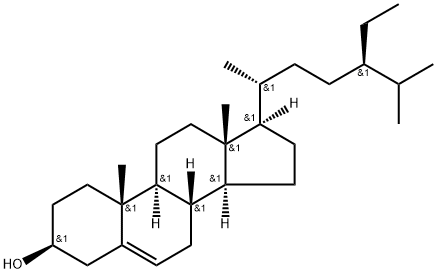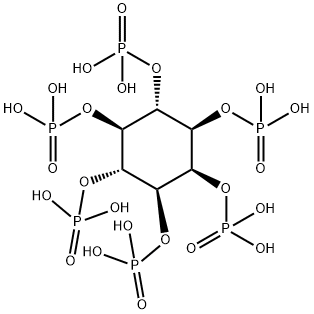Phytol
Synonym(s):3,7,11,15-Tetramethyl-2-hexadecen-1-ol
- CAS NO.:150-86-7
- Empirical Formula: C20H40O
- Molecular Weight: 296.53
- MDL number: MFCD00151280
- EINECS: 205-776-6
- SAFETY DATA SHEET (SDS)
- Update Date: 2025-12-26 08:49:36

What is Phytol?
Description
Phytol is a diterpene alcohol obtained from the degradation of chlorophyll and has been used in the synthesis of Vitamins E and K. During the digestion process of ruminants, phytol is liberated from chlorophyll and converted to phytanic acid to be stored in fats. While humans cannot derive phytol from chlorophyll, free phytol, obtained from the consumption of ruminant adipose tissue and dairy products, is readily absorbed in the small intestine and converted to phytanic acid. Phytanic acid accumulates to toxic levels in a number of metabolic disorders, and the conversion of phytol to phytanic acid has been shown to be regulated via the activation of peroxisome proliferator-activated receptor α (PPARα). Phytol and its metabolites have also been reported to activate retinoid X receptors (RXRs; Kis range from 2.3-67.2 μM) and to promote the activity of PPAR/RXR heterodimers. Phytol also demonstrates sedative and anxiolytic effects through interaction with the GABAA receptor, and it has been explored as an antischistosomal agent in a mouse model of schistosomiasis.
Chemical properties
Colorless to yellow viscous liquid with a faint floral scent, found naturally in jasmine essential oil and tea. It cannot dissolve in water, but is able to dissolve in organic solvents.
Occurrence
Reported found in Herniaria incana lam oil Greece (2.60%) and Witch hazel leaf oil (9.79%).
The Uses of Phytol
trans-Phytol is a reagent that is used in the preparation of α-tocopherol analogs as mitochondrial antioxidants.
Definition
ChEBI: Phytol is a diterpenoid that is hexadec-2-en-1-ol substituted by methyl groups at positions 3, 7, 11 and 15. It has a role as a plant metabolite, a schistosomicide drug and an algal metabolite. It is a diterpenoid and a long-chain primary fatty alcohol.
Production Methods
Phytol can be obtained from natural raw materials by a variety of processes. The industrial synthesis of phytol starts from isophytol. The latter is first treated with formic acid to give phytyl formate, from which (Z, E )-phytol (isomer ratio 3 : 7) is obtained by saponification or transesterification.
Aroma threshold values
Low strength odor, floral type.
Safety Profile
Low toxicity by ingestion and skin contact. A skin irritant. When heated to decomposition it emits acrid smoke and irritating fumes.
Properties of Phytol
| Melting point: | <25 °C |
| Boiling point: | 202-204 °C (10 mmHg) |
| Density | 0.85 |
| refractive index | 1.461-1.469 |
| FEMA | 4196 | PHYTOL |
| Flash point: | 179℃ (Cleveland open test) |
| storage temp. | Inert atmosphere,2-8°C |
| solubility | Chloroform, Methanol (Sparingly) |
| form | Oil |
| pka | 14.45±0.10(Predicted) |
| color | Light Yellow to Yellow |
| Odor | at 100.00 %. delicate floral balsam powdery waxy |
| Merck | 14,7390 |
| JECFA Number | 1832 |
| Stability: | Light Sensitive |
| CAS DataBase Reference | 150-86-7(CAS DataBase Reference) |
| EPA Substance Registry System | Phytol (150-86-7) |
Safety information for Phytol
| Signal word | Danger |
| Pictogram(s) |
 Corrosion Corrosives GHS05  Exclamation Mark Irritant GHS07  Health Hazard GHS08  Environment GHS09 |
| GHS Hazard Statements |
H302:Acute toxicity,oral H317:Sensitisation, Skin H318:Serious eye damage/eye irritation H360:Reproductive toxicity H370:Specific target organ toxicity, single exposure H372:Specific target organ toxicity, repeated exposure H411:Hazardous to the aquatic environment, long-term hazard |
| Precautionary Statement Codes |
P201:Obtain special instructions before use. P202:Do not handle until all safety precautions have been read and understood. P260:Do not breathe dust/fume/gas/mist/vapours/spray. P264:Wash hands thoroughly after handling. P264:Wash skin thouroughly after handling. P270:Do not eat, drink or smoke when using this product. P272:Contaminated work clothing should not be allowed out of the workplace. P273:Avoid release to the environment. P280:Wear protective gloves/protective clothing/eye protection/face protection. P391:Collect spillage. Hazardous to the aquatic environment P302+P352:IF ON SKIN: wash with plenty of soap and water. P333+P313:IF SKIN irritation or rash occurs: Get medical advice/attention. P405:Store locked up. |
Computed Descriptors for Phytol
| InChIKey | BOTWFXYSPFMFNR-PFIWFTBQSA-N |
Phytol manufacturer
New Products
4,4-Difluoropiperidine hydrochloride tert-butyl 9-methoxy-3-azaspiro[5.5]undecane-3-carboxylate Indole Methyl Resin N-Isopropylurea N,N-Dicyclohexylcarbodiimide(DCC) MELDRUMS ACID 5-METHYLISOXAZOLE-4-CARBOXYLIC ACID Magnessium Bis glycinate Zinc ascorbate 1-bromo-2-butyne 2-acetamidophenol 9(10H)-anthracenone Erythrosin B, 4-Piperidinopiperidine 2-((4-morpholinophenylamino) (methylthio) methylene) malononitrile 2,4-dihydroxybenzaldehyde 3-(4-morpholinophenylamino)-5-amino-1H-pyrazole-4-carbonitrile Methyl 2-methylquinoline-6-carboxylate 2,6-dichloro-4-nitropyridine 4-Bromo-2-chlorobenzonitrile 2-(benzylamino)acetic acid hydrochloride 4-(tert-Butoxycarbonylamino)but- 2-ynoic acid 3,4-dihydro-2H-benzo[b][1,4]dioxepine 1-Phenyl-1-cycloprppanecarboxylicacidRelated products of tetrahydrofuran








You may like
-
 Phytol mixture of isomers 98%View Details
Phytol mixture of isomers 98%View Details -
 Phytol 90.00% CAS 150-86-7View Details
Phytol 90.00% CAS 150-86-7View Details
150-86-7 -
 Phytol powder 1View Details
Phytol powder 1View Details
7541-49-3 -
 3-(4-amino-1-oxoisoindolin-2-yl)-1-methylpiperidine-2,6-dione 98%View Details
3-(4-amino-1-oxoisoindolin-2-yl)-1-methylpiperidine-2,6-dione 98%View Details -
 20677-73-0 (2,2-diethoxyethyl)methylamine 98%View Details
20677-73-0 (2,2-diethoxyethyl)methylamine 98%View Details
20677-73-0 -
 3-(4-(hydroxyamino)-1-oxoisoindolin-2-yl)piperidine-2,6-dione 98%View Details
3-(4-(hydroxyamino)-1-oxoisoindolin-2-yl)piperidine-2,6-dione 98%View Details -
 57381-49-4 2-bromo-4-chlorobenzonitrile 98%View Details
57381-49-4 2-bromo-4-chlorobenzonitrile 98%View Details
57381-49-4 -
 4,6-dichloropyrimidine-5-carbaldehyde 98%View Details
4,6-dichloropyrimidine-5-carbaldehyde 98%View Details
5305-40-8
